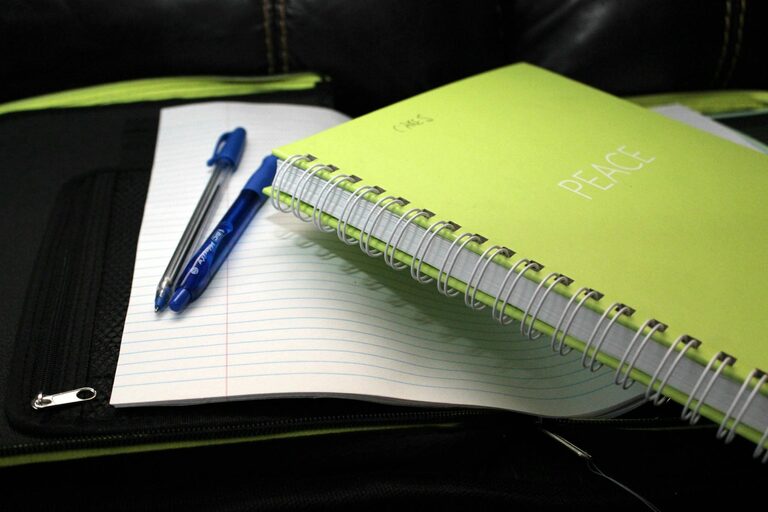Choosing the right notebook might seem like a small decision, but it can significantly impact how often you use it—and how much you enjoy writing, planning, or sketching in it. Whether you want a journal, a planner, or a simple notebook for notes, the ideal choice matches your personal habits and preferences.
In this post, we’ll explore how to pick a notebook you’ll actually use. We’ll cover everything from size and layout to paper quality and design, helping you find a notebook that inspires you every time you pick it up.
Understand Why You Need a Notebook
Before diving into specs and styles, think about the main purpose of your notebook.
– Journaling: Do you want to capture your thoughts, feelings, or daily reflections?
– Work or School Notes: Are you taking quick notes, drawing diagrams, or summarizing meetings?
– Planning and Organization: Will it serve as a planner for appointments, tasks, and goals?
– Creative Projects: Do you want to sketch, brainstorm, or write stories?
Knowing the primary use will guide your choices and help keep your notebook relevant to your routines.
Pick the Right Size and Format
Notebooks come in many sizes, each with pros and cons.
Common Notebook Sizes
– Pocket-size (A6 or smaller): Great for portability. Ideal if you want to carry it everywhere but may limit writing space.
– Medium (A5 or similar): The most popular size. Large enough for detailed notes but still easy to carry.
– Large (A4 or bigger): Best if you need lots of space per page, like sketches or detailed plans, but less portable.
Binding Types
– Spiral-bound: Allows the notebook to lay flat or fold back, convenient for writing on one side.
– Perfect-bound or Hardcover: More durable with a professional look; some may not lay flat.
– Softcover or Stitch-bound: Lightweight but may be less sturdy.
Choose the size and binding that fit your lifestyle and how you plan to use the notebook.
Consider Paper Quality and Layout
The feel of the paper and the page layout will affect your writing experience.
Paper Weight and Texture
– Weight: Measured in GSM (grams per square meter), heavier paper (typically 80-120 GSM) resists ink bleed and feels more substantial.
– Texture: Smooth papers are great for pens and markers; rougher papers may suit pencil or mixed media.
Page Layout Options
– Ruled: Standard lines, perfect for writing.
– Dotted: Provides guidance without being obtrusive; great for bullet journaling.
– Grid/Graph: Useful for technical notes, charts, and drawings.
– Blank: Ideal for sketching or free-form writing.
Choose a layout that aligns with your writing or drawing style.
Think About Design and Extras
A notebook you love to look at and use is more likely to become a habit.
– Cover Design: From minimalist to colorful patterns, pick something that motivates you.
– Extras: Some notebooks have pockets, page markers, elastic closures, or numbered pages—features that can keep you organized.
– Refillable Notebooks: Allow you to swap out pages, reducing waste and letting you keep your favorite covers.
Consider what features will make your notebook more functional and enjoyable.
Test Before You Commit
If possible, try writing in different notebooks before buying.
– Write a few lines with your favorite pen.
– Feel the paper texture and weight.
– Check if the notebook lies flat or folds easily.
– Think about how it feels to carry around.
Testing helps avoid impulse buys that may end up unused.
Tips to Maintain Your New Notebook Habit
Buying the right notebook is just the start. Here are some tips to make sure you use it consistently:
– Set a routine: Dedicate a specific time each day or week to write or plan.
– Keep it accessible: Store your notebook where you can see or reach it easily.
– Personalize it: Add stickers, doodles, or color codes to make it fun.
– Use it for multiple purposes: Combine planning, notes, and creativity—all in one place.
– Don’t stress about perfection: It’s okay for pages to be messy; focus on progress.
Final Thoughts
The notebook you’ll actually use is one that fits your lifestyle, feels good in your hands, and inspires you to write or create. By considering your needs, preferences, and habits, you can choose a notebook that becomes a valuable tool—not just another unused item.
Remember, the perfect notebook supports your goals and makes writing a pleasure. Happy notebook hunting!

